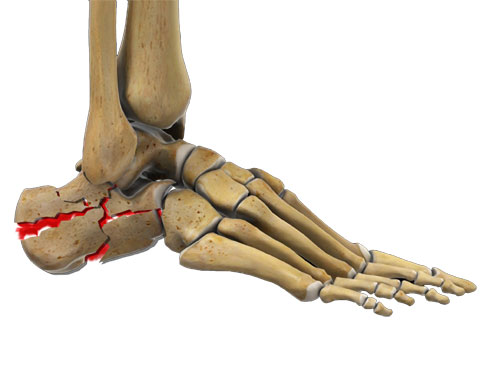The heel bone, or calcaneus, is what forms the foundation of the rear part of the foot. However, the calcaneus is actually quite fragile. Think of it as a hard-boiled egg; a thin, hard shell on the inside, with soft, spongy bone on the inside. When the outer shell is broken, the rest of the calcaneus tends to collapse and become fragmented, making calcaneal fractures severe injuries.
How do Calcaneal Fractures Happen?
These are usually the result of a traumatic event, specifically a fall from a greater height like a ladder, or being in a car accident where the heel is crushed against the floorboard. They can also occur with other injuries, like sprains or stress fractures.
Types of Calcaneal Fractures
There are two types of calcaneal fractures: intra-articular fractures (more severe fractures involving the joints and damage to the connective tissues) and extra-articular fractures (those that don't involve the joint)
Signs and Symptoms
Symptoms of a traumatic calcaneal fracture include:
- Sudden pain in the heel and inability to bear weight on the injured foot
- Swelling in the heel area
- Bruising of the heel and ankle
Symptoms of stress fractures of the calcaneus include:
- Generalized pain in the heel that develops slowly over the course of several days to weeks
- Swelling in the heel area
Diagnosing a Calcaneus Fracture
Your podiatrist will ask you questions as to how the injury to your heel occurred, examine the foot and ankle, and order x-rays. More advanced imaging test are usually required as well.

